| SYROS
Syros is one of the smaller of the Cyclades islands. It is 22kms long and 9 kms wide with an area of 86 squre kilometres. However, because it is the capital of the group, its largest town, Hermoupolis, is in fact the largest town in the Cyclades with a population of over 13,000 people. A further 10,000 people live in other parts of the island.
The island does not attract a lot of tourism and I must confess that my main reason for going was to cross it off my list, as it were. However, that view is very much mistaken. While the island does not have a lot to offer, the town of Hermoupolis does. Better still, because it is not a tourist resort, the island still retains a very strong Greek feel to it. For example, the cafe-bars around the harbour fill up with young Greeks rather than young tourists in the evenings. And if you are a foreign tourist you can wander the streets without coming across more than a handful of other tourists. What a change after islands like Mykonos and Santorini. If you want to spend some time on a really Greek island in the Cyclades this should certainly be on your list.
In the period after independence, Hermoupolis was the principal port and major industrial/commercial centre for the whole country. Since then, of course, this role has been taken over by the three main cities of Athens-Piraeus, Thessaloniki and Patras. But the prosperity of that earlier period can still be seen in the neo-classical buildings dotted around the town. A major shipyard, Neorion, remains in the town, employing some 2,000 people.
There is a greater percentage of Catholics on Syros than on any of the other Cyclades islands and both the Catholic and Greek Orthodox Archbishoprics of the Cyclades have their seats here.
HISTORY
In ancient times the island was insignificant. Its one claim to fame is the early philosopher Pherecydes who it is said was born on the island in 598 BC and founded a school of philosophy. His most famous student was Pythagoras. Pherecydes was also an astronomer and some say that he invented the sun dial.
Syros only rose to prominence towards the end of the Ottoman period at a time when Hermoupolis was the principal port and commercial centre in the Eastern Mediterranean. This development dates from the mid-17th century. The island was plagued with attacks from pirates and the Catholics living on the island appealed to the French King for protection.
During the Greek War of Independence the island became a gathering place for exiles from other islands and refugees from other parts of the Ottoman Empire. The island remained neutral during the War of Independence though the islanders provided shelter to refugees.
After the Greek War of Independence the island continued to prosper as it was ideally placed on major sea routes as a refuelling stop for ships which at that time burnt coal and had to make frequent refuelling stops on their voyages. Contacts were particularly close with the British.
During this period the cultural development of the island continued to grow and many neo-classical buildings were constructed to house the High School, University, Law Courts, Town Hall and the Theatre of Apollo, modelled on La Scala in Milan.
The decline of Syros began when oil replaced coal as the fuel used by ships and the island was no longer needed as a refuelling stop. Nevertheless the size and grandeur of the town is very striking to the visitor arriving from other islands in the Cyclades.
HERMOUPOLIS
The town can roughly speaking be divided into four areas. On arrival the first area you encounter is the harbour, lined as it is with cafes, bars and shops. Behind that is the main shopping area together with the administrative and cultural centre of the 19th century town. It is very pleasant to wander around the streets behind the port area, window shopping and stopping off for a coffee at one of the many cafe-bars. The town hall square is also very pleasant in the evening when it fills with children whose parents sit at the cafes that surround the square.
Behind the administrative centre two hills rise above the town, both of them inhabited. To the right is the hill called Vrontado. This is the Greek Orthodox town which developed after the War of Independence. At the top of the hill is the church of the Anastasis. From here there are fine views of Tinos and Mykonos as well as of the the 19th century town and the harbour below.
To the left, further inland and higher than Vrontado is Ano Syros, the medieval Venetian town where most of the island's Catholics live. The Church at the top of this hill is St. George. This Ventian town is far more attractive than the more modern Vrontado.
The climb to Ano Syros up 800 steps is extremely taxing and not recommended on a hot day. Buses run round the back of the hill and drop you off near the top. Taxis are also a cheap alternative. At the top of the hill is the Catholic Catheral of St George, founded by the Venetians, and the Monastery of the Capuchins, founded in 1635 by Louis XIII of France. The presence of this monastery under French protection saved the island from the Turks and gave it a de facto neutral status.
The streets of Ano Syros are very picturesque and there are a couple of tavernas with a fine view across the town to the harbour and beyond which make a pleasant setting for an evening meal. There is also a memorial to the rembetica musician Marcos Vamvakaris, who was born in Ano Syros.
SEEING THE ISLAND
A circular bus route takes you west from Hermoupolis across the island to Kini and then south to Gallisas, Foinikas, Poseidonia, Megas Yialos, Vari, Azolimnos, Mana and back to Hermoupolis. The round trip takes just over an hour and gives you an idea of what the island is like. In a word, barren. However, there are a number of attractive villages with beaches on this route where you can get off if you want to go for a swim. Buses leave hourly from the harbour front in Hermoupolis.
TOURIST INFORMATION
There are regular boat services between Syro and Pireus, Tinos, Mykonos and other islands in the Cyclades. These include some very fast (but rather expensive) services using hydrofoils, catamarans, etc. Numerous travel agents can be found along the harbour front. Check out several of them to get the full timetable of departing vessels.
Rooms are easy to come by in the harbour area and are relatively cheap. Kastro rooms (0281-88064) are situated in a fine old building which is a delight to stay in.
The speciality of the island is loukoumia, which we English call Turkish Delight (keep your hair on!). A number of shops sell this in a variety of flavours , including in mixed boxes so that can give all the flavours a try.
by Ian Swindale
Photos © Ian Swindale
Copyright: Hellenic Electronic Center
|

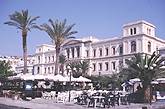
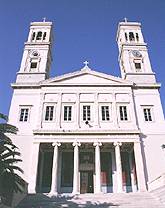
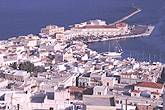
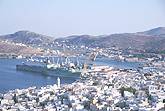
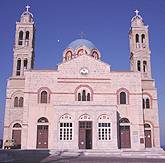
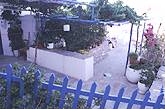
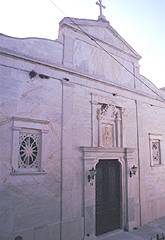
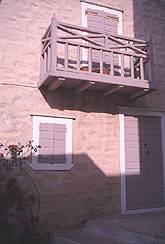
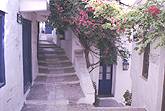
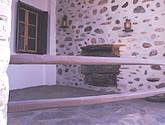
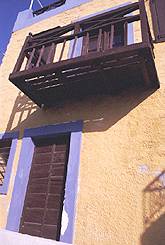
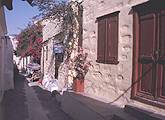
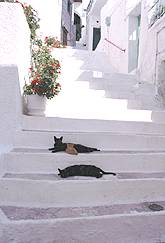
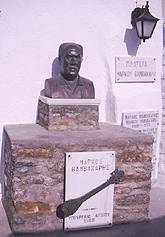
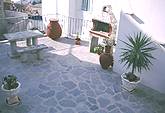
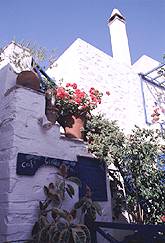
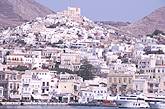

|


















